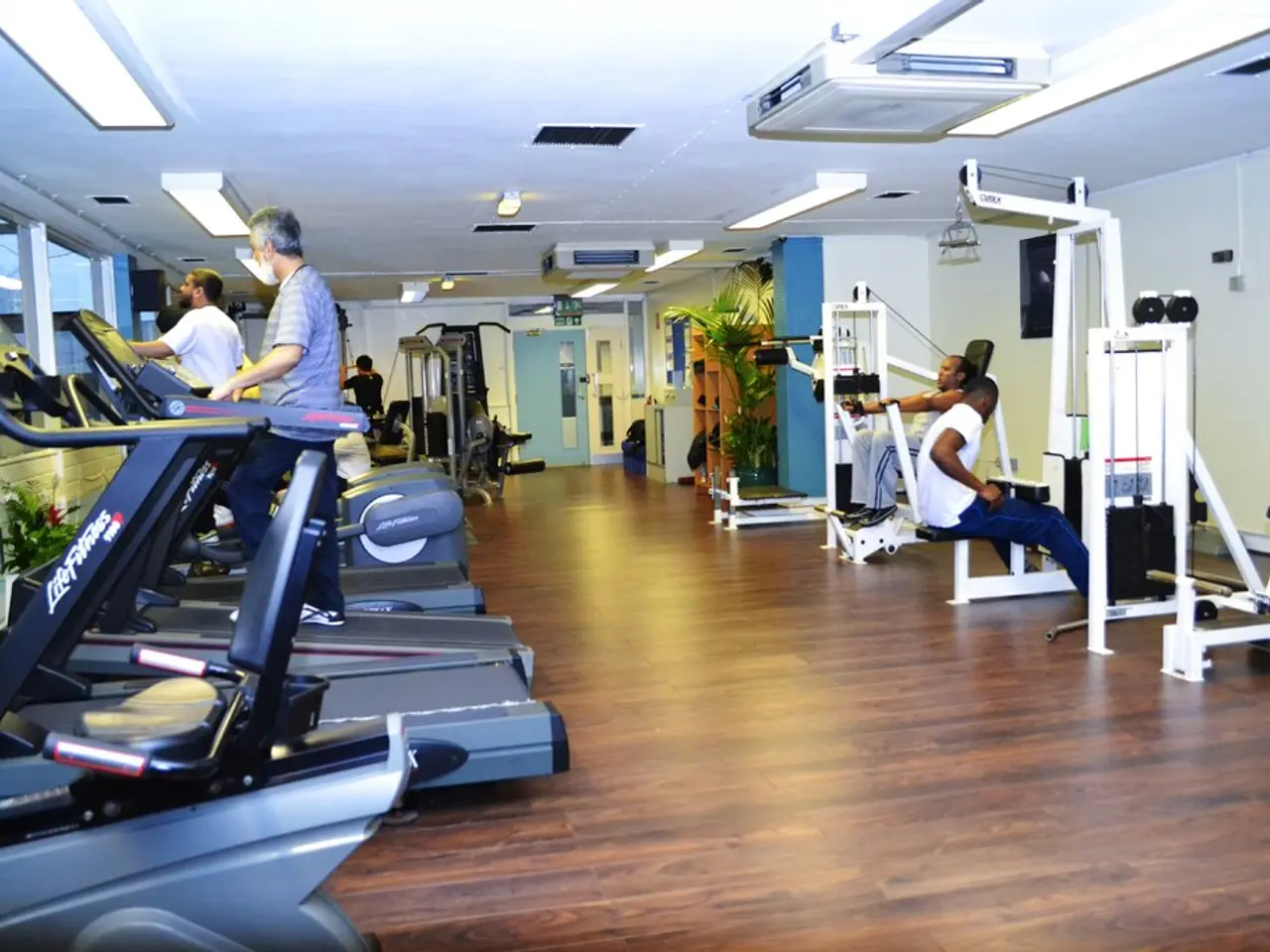Exercise-Induced Migraine: Management and Prevention Strategies
Migraines and primary exertional headaches (PEH) can both be debilitating, but they have distinct differences. Understanding these differences can help individuals manage their headaches effectively.
Migraines are chronic neurological disorders that involve recurrent moderate to severe headaches called "migraine attacks." These attacks often occur on one side of the head and can be accompanied by symptoms such as nausea, sensitivity to light (photophobia), and sensitivity to sound. In some cases, migraines can be triggered by overexertion.
On the other hand, PEH are exertional headaches that can occur after intense or strenuous forms of physical activity, such as running or weightlifting. Unlike migraines, PEH headaches are bilateral, meaning they occur on both sides of the head. They share some symptoms with migraines, such as moderate to severe throbbing head pain and nausea without vomiting.
It's essential to note that there is a relationship between exercise intensity and the likelihood of triggering migraines. Intense or vigorous exercise can increase the risk of migraine attacks, especially in combination with other triggers such as dehydration, low blood sugar, abrupt routine changes, or environmental factors like heat and humidity [1][2].
In contrast, PEH are a separate headache disorder triggered specifically by strenuous or sudden physical activity, unrelated to migraine mechanisms [4]. PEH have no association with aura, prodrome, or postdrome, which are phases of migraine attacks.
Managing exercise-related headaches involves maintaining good hydration, practicing post-workout relaxation, and limiting exposure to light sources. Gradually increasing exercise intensity and duration may help prevent migraine after a workout. Regular exercise can also help reduce the frequency of migraine attacks, according to the American Migraine Foundation (AMF) and the National Headache Foundation (NHF) [1][2].
Primary exertional headaches are generally not dangerous but can occasionally be a sign of a brain abnormality or disease. A sudden and severe headache called a "thunderclap headache" can develop after physical activity and may indicate a medical emergency. If a person experiences severe or repeated migraine episodes after working out or headaches that are severe and only occur after exercising, they should contact a doctor.
In conclusion, understanding the differences between exercise-induced migraines and primary exertional headaches is crucial for effective management. Exercise intensity can increase migraine risk through multiple physiological stressors, while PEH are a separate non-migraine headache related solely to exertion. Managing nutrition, hydration, gradual warm-up, and avoiding overexertion can help reduce the likelihood of exercise-triggered headaches.
References:
[1] American Migraine Foundation. (2021). Exercise and Migraine. Retrieved from https://americanmigrainefoundation.org/resource-library/exercise-and-migraine/
[2] National Headache Foundation. (2021). Exercise Headaches. Retrieved from https://www.headaches.org/2021/02/18/exercise-headaches/
[4] Mayo Clinic. (2021). Primary exertional headaches. Retrieved from https://www.mayoclinic.org/diseases-conditions/primary-exertional-headaches/symptoms-causes/syc-20371395
- Recurrent migraine attacks are a characteristic of chronic neurological disorders known as migraines, which often trigger headaches on one side of the head and may include symptoms like nausea, photophobia, and sound sensitivity.
- Migraines can sometimes be brought on by overexertion, but primary exertional headaches (PEH) are distinct and are triggered specifically by intense or strenuous physical activity, like running or weightlifting.
- Unlike migraines, PEH headaches occur on both sides of the head, and they do not have associations with phases like aura, prodrome, or postdrome during migraine attacks.
- The American Migraine Foundation and the National Headache Foundation suggest maintaining good hydration, practicing post-workout relaxation, and limiting exposure to light sources to manage exercise-related headaches.
- Intense exercise can heighten the risk of migraine attacks, often in combination with triggers such as dehydration, low blood sugar, sudden routine changes, or environmental factors like heat and humidity.
- PEH are generally harmless, but a severe and sudden migraine or a "thunderclap headache" after physical activity could signal a medical emergency.
- If a person experiences severe or repeated migraines after working out, or headaches only occurring after exercise, it's advisable to contact a medical professional for further evaluation.
- Effective management of both exercise-induced migraines and primary exertional headaches necessitates understanding their differences and implementing strategies like good nutrition, hydration, and avoiding overexertion to reduce headache risks.




